When thinking about designing your perfect pool, what shape do you see? Do you envision a rectangular pool that glides across your lawn creating a seemingly endless span of blue water? Do you think about an L-shaped pool that wraps around an ornamental piece of art? Or does your imagination gravitate toward a special shape? If you haven’t yet decided which pool shape is right for you, here are some special considerations that you should think about during the planning phase.
Pool Shape Basics
It’s exciting, isn’t it? Your yard is a blank slate, and you get to work with your pool professional to design the perfect pool for you and your family. Selecting the pool shape is the first part of that process.
You have a multitude of options, and below, we’ve broken down the most popular choices to help you decide. But before you start the decision-making process, ask yourself these questions:
- What pool shapes support the types of landscaping or pool features that you want?
- Which type of pool shape is right for your lawn shape and size?
- What will you use the pool for? (Laps, pool parties, water sports?)
- How deep do you want your pool?
- Do you want to add functional features in or next to your pool such as a spa, swim-up bar, tanning ledge, or diving board?
- How much money do you want to spend? (Your pool professional will speak with you about the costs associated with each pool shape.)
Which Pool Shape Will Fits Your Vision?
Now that you’ve narrowed down the design a bit, let’s take a look at the most popular pool shapes you can choose from.
Kidney-Shaped Pool
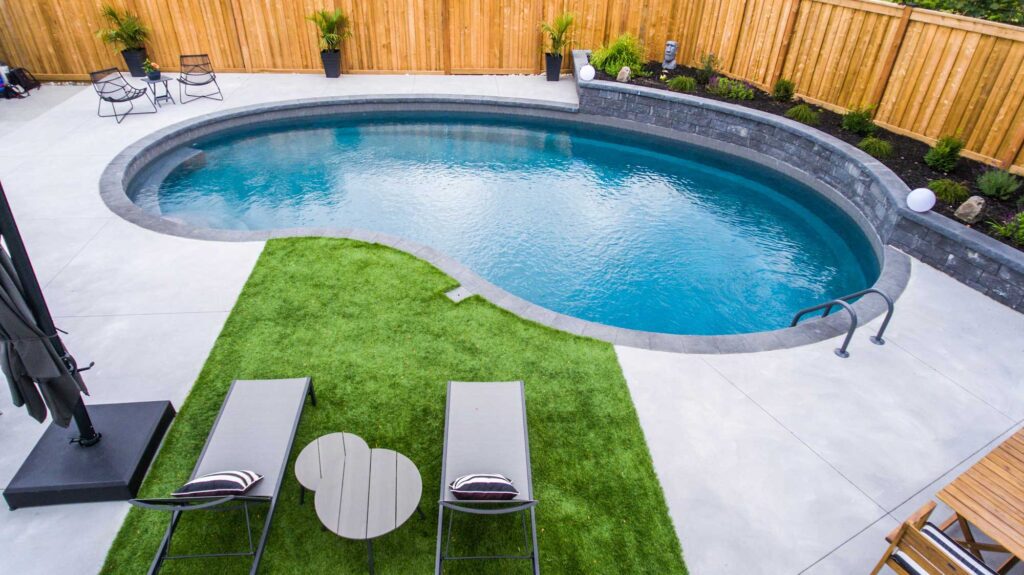
Kidney-shaped pools are a blast from the past, but they remain popular for those who want a practical pool that offers more space and less expensive construction costs. The pool is built in a curved configuration with a slight indent on one side. That indent can be used for landscaping, a hardscape, an art piece, or whatever else would sit in the spot and add to your backyard ambiance.
Kidney-shaped pools are great for people who have children and want a delineated deep end and shallow end. They can also be used as lap pools if they are constructed with that in mind.
The design possibilities are endless for this type of pool. For instance, you can line curved benches along the perimeter of the pool on both ends, or line the curves with landscaping. You can also choose to put a tanning shelf in the shallow part of the pool and a diving board at the deep end.
Rectangular Pool
If your vision includes a sleek, contemporary look, a rectangle pool may be for you. But this type of shape requires a large space. If your yard is big and can accommodate a rectangular pool, it’s a great option. But even if you have a smaller yard and want a sleek design, you can accomplish your vision by narrowing the pool or even shortening it.
One challenge to this type of pool shape is the sharp corners that stem from the design. All those 90-degree angles on the steps and pool corners can be difficult to clean. Even some automatic cleaners can get stuck in the unforgiving corners. Additionally, because you will get more perimeter footage with this type of pool, the construction costs will be higher.
Many people choose rectangular pools for lap swimming or creating the perfect pool area for water volleyball and other sports. Another positive is that the design can easily accommodate almost any feature you want to add, including pool-end spas and water features. And if you want a pool cover, you’ll find a lot of rectangular designs, even motorized options.
Lastly, if you love the look of this design but don’t quite have room for it, you can modify it. For example, if you have a gazebo in your yard and don’t want to move it, you can simply design a rectangular pool around it by cutting out a corner of the rectangle.
L-Shaped Pool
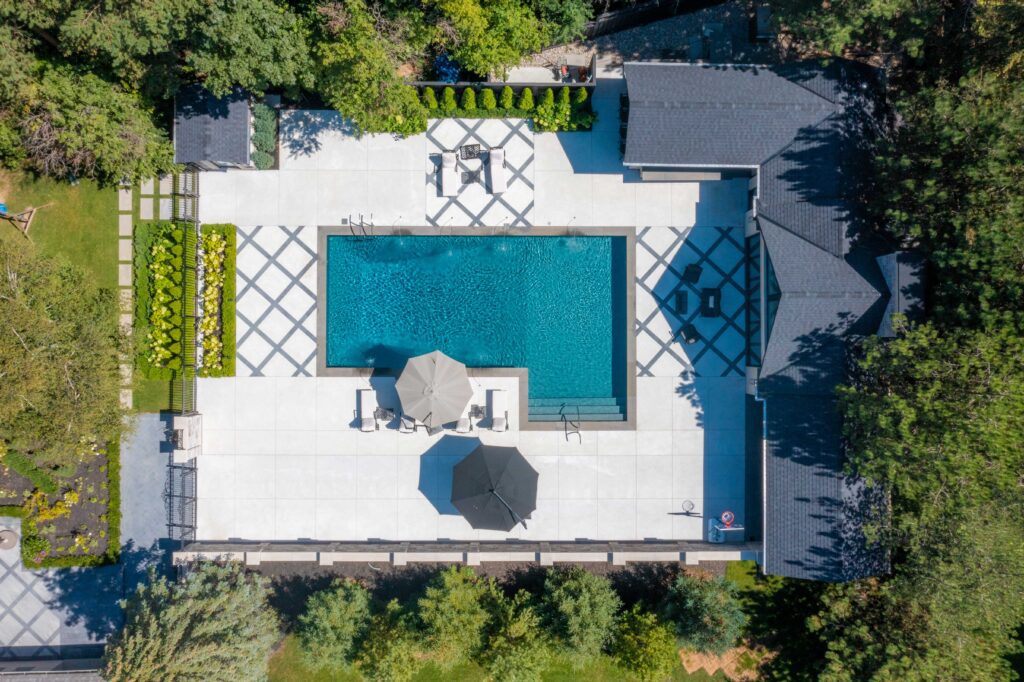
If you have a large yard and want a big shallow end for your pool, an L-shaped pool may be the perfect fit. One of the biggest benefits of this pool shape is the ability to completely separate the deep end and shallow end. For instance, if you want a lap pool, the long section of the “L” could be the deep end. But you can use the foot, or short end of the “L,” to provide a separate shallow area for your kids to play.
This is advantageous because building codes require a steep slope if you have a diving end on one end of your pool. But if the boot end of the pool is shallow, it gives your kids a safe entrance into the pool that completely avoids the deep end.
Another variation of this pool shape is the lazy L. In this design, the boot portion of the pool is smaller. That’s ideal if you want to use the shallow end as a tanning ledge or an area for the pool steps instead of a large play area.
Another variation of this pool is the T. The pool is shaped like a T, which enables a deep diving area on one end of the top of the T and a shallow play area on the other top end. The long area of the T can be used for laps.
Geometric Pool Shapes
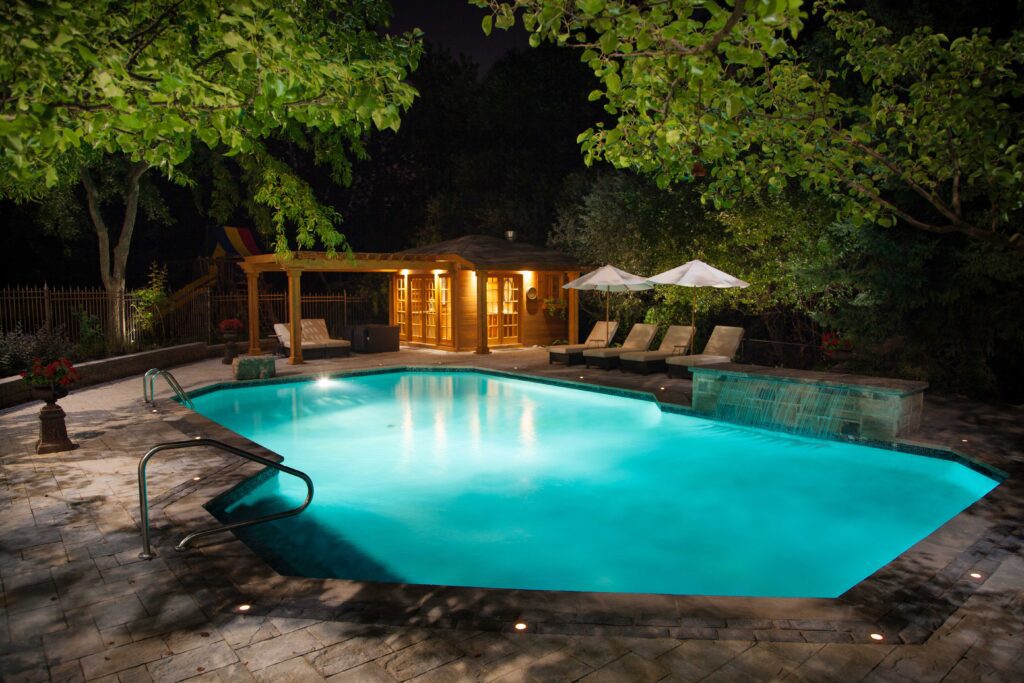
Also known as straight-edge pool shapes, a geometric pool shape encompasses many different designs. They are organized into two categories: true geometric shapes (think: circles, rectangles, hearts, triangles, and ovals) and custom shapes that combine straight lines and curves. The geometric pool shape you choose depends on whether you want a traditional design or a unique and distinctive one.
Custom geometric pool shapes are ideal for homes that have unique architectural shapes and designs – many homeowners design the pool to match the lines of the home. On the other hand, if you prefer a traditional and classic look, a round or oval design will provide it.
Classic Pool Shape (Roman or Grecian)
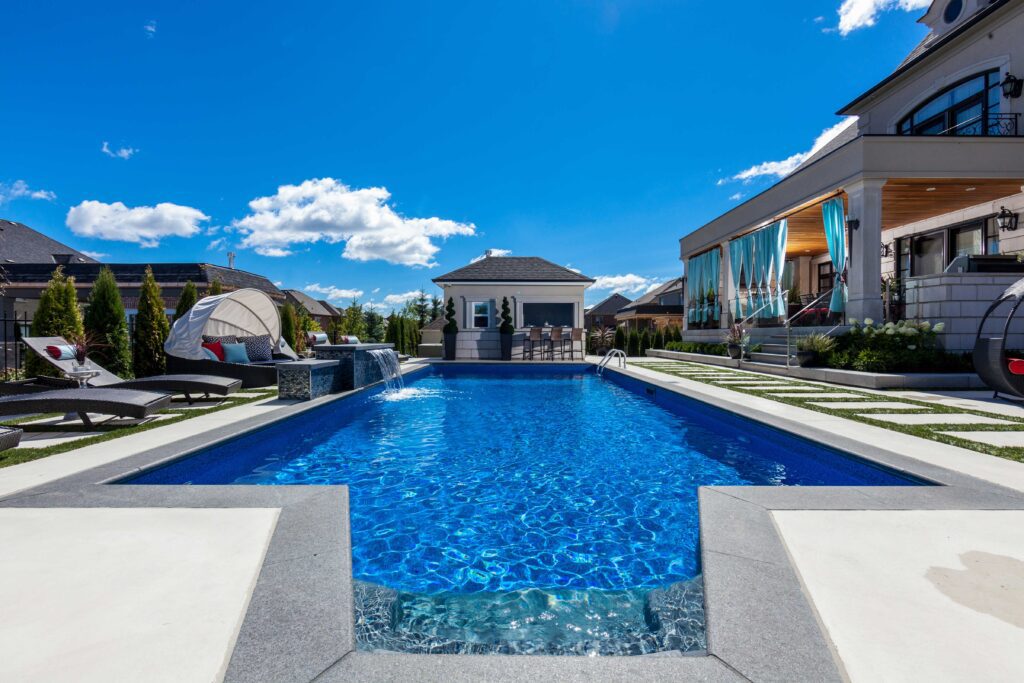
If you dream of a classic Roman or Grecian backyard, then a classic pool is probably right for you. These pool shapes harken back to the days of grand expanses and architecture. Simplicity combined with elegance is the hallmark of these pool designs.
They typically feature a rectangular pool with angled and radius modifications at the ends of the pool. The most popular of the classic designs is the Roman shape in which both ends of the pool are rounded. A half-Roman pool shape differs in that it only has one rounded end and is used when the other end of the pool is built flush up to a building or other feature. The Grecian classic shape is also a rectangle pool, but its ends are cut off at 90-degree angles.
The biggest drawback to this type of pool, other than the fact that you need a large yard to accommodate it, is that placing a spa at the end of the pool will require you to opt for a half-Roman or half-Grecian shape.
Free-Form Pool Shape
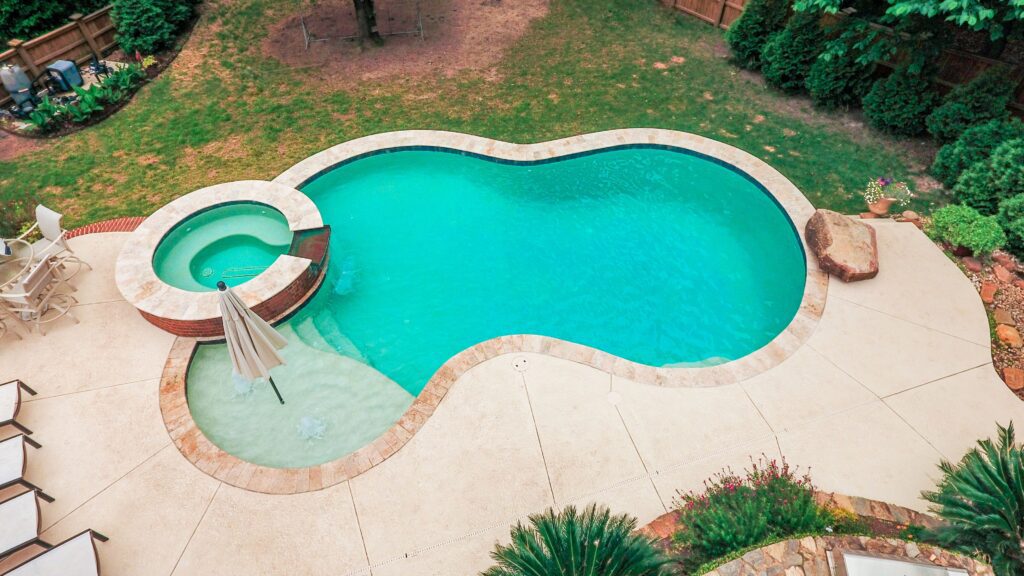
For people who want to think outside the box for their pool design, a free-form pool is likely the answer. This type of design, which is also called a radius pool, consists of rounded curves put together in a free-form style. For example, one popular free-form pool is the bubble shape or cloud, which looks exactly like it sounds.
Free-form pools are also used to create the innovative lagoon-style and beach-entry pools that are so popular. That’s because the free-form design makes it easy to emulate a natural setting and meander around existing landscaping and even trees.
A drawback of this do-your-own-thing type of pool shape is that these designs can be costly to build. Also, it can be impossible to find an off-the-shelf pool cover to fit your pool, so you’ll have to purchase a pricier custom one.
Figure-8 Pool
Figure-8 pools came into style on the heels of the kidney-shaped pool. It looks like it sounds: a figure eight, only the pool has a thicker middle section than the number. With its more contemporary style, a figure-8 pool shape offers swimmers a more generous swimming area than a kidney-shaped pool does.
Which Design Will You Choose?
As you can see, pools come in all shapes and sizes. When designing yours, think about the mood you want to create in your backyard and then pick the pool shape that will best tell your design story.



Recent Comments